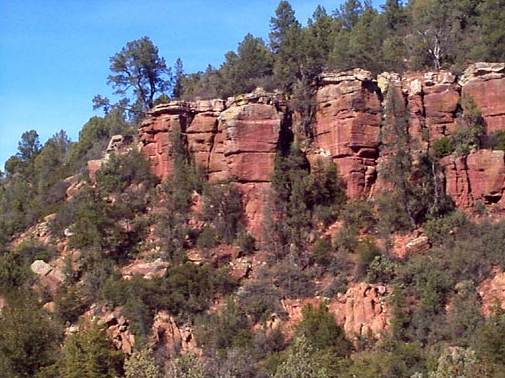 |
TRACE
FOSSILS OF THE TAPEATS SANDSTONE
In the
Payson Area, Northern Arizona
Lowermost
member of the Tonto Group
| 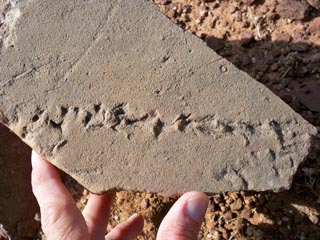 |
Updated 8/15/10
 | The Tapeats
Sandstone is a lower middle Cambrian aged sedimentary sequence
of conglomerates, coarse and fine sands down to nearly shale
like facies. It represents a near shore to tidal flat deposit
from 510 million years ago which covered the Payson area, Mogollon
Rim and Grand Canyon areas in Arizona. Trace fossils are scarce,
but when present give a unique window to a very ancient biome
in which the dominant life forms were trilobites, a full range
of extremely primitive arthropods, inarticulated brachs, hydrozoans,
eocrinoids and other soft bodied forms that only were preserved
as their traces on the sea bottom. The Tapeats was host to the
same biota as the more famous Burgess Shale in Canada, Here in
the Payson Area, we have two biogenic facies - the Skolithos
facies and the Cruziana facies for trace fossils. Most of the
trace fossils in the Payson area are various worm burrows and
tubes, and we have as of yet never found a trilobite trackway
here. |
NOTE: click the smaller thumbnails below for a larger version
Field Appearance
 | Here is the outcrop at
the East Verde River, just north of Payson. The sandstone layers
sit on top of 1.8 billion year old Precambrian granite which
decomposes to a coarse gravel through out the Payson area. Therefore
there is a huge 1.2 Billion year disconformity here. Our house
sits on the Tapeats as well, and while a few fossils are present,
we have plenty of sedimentary structures. I always wanted to
live near a beach... |
Cruziana Facies - Deeper Water
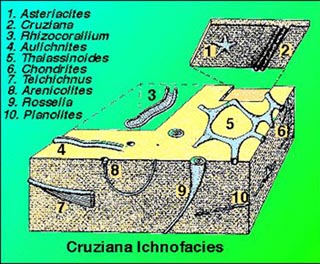 |
Diagram of the far from shore sand facies also found in the Payson
area. We primarily have #8, Arenicolites fossils from this facies,
which are a U tube worm burrow with no spreiten. (Former burrow
position lines). We have also found a fossil not shown here,
Bergauria - Sea anenome suction cup marks near the Verde River
outcrops. We have yet to find Cruziana in Payson. |
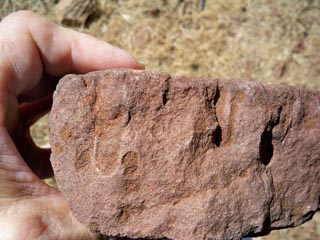 |
Arenicolites, side view. Formerly called "Corrophiodes",
this name has been reserved for an extant fish and is no longer
used. Look carefully here, and you can see on the left side the
U tube shape of the burrow. |
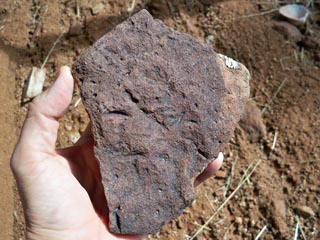 |
Arenicolites, Here are how most fossils are found, this is the
very bottom of the U tube burrow, and looks like a curved slit
in the mud. Many times the sandstones split like shales and show
the layers that were below the surface as well. |
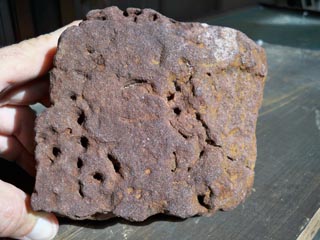 |
Arenicolites, surface view. Here are the paired holes that define
what the mud surface would have looked like for this U tube worm
burrow. The animal stayed in its burrow for its entire life and
fed on the particles of food suspended in the water as it passed
by. |
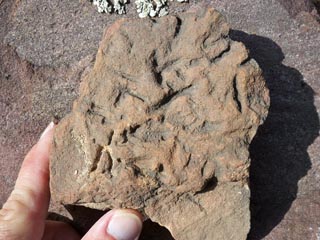 |
Arenicolites, as above found near out home near the Airport.
Many U tube slits cover this specimen and shows the crowding
that is encountered in many areas from this rich biome. |
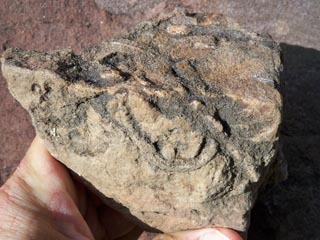 |
Arenicolites, side view. Another view here of the actual U tube
that the animal occupied during its filter feeding life style. |
 |
Unknown Arthropod trackway. This was a fairly large animal, like
a large crustacean or bottom crawling arthropod. We have never
found anything like this ever. |
Skolithos Facies - Near shore and Tidal Flats
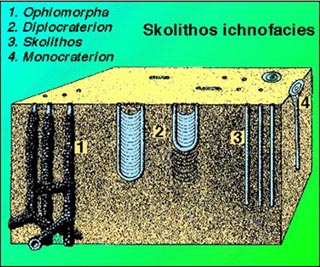 |
Diagram of the Skolithos facies. While I have yet to see Diplocraterion
here, we have found both Skolithos and Monocraterion. |
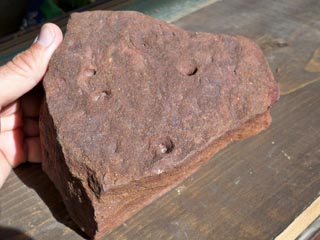 |
Monocraterion. Straight vertical burrow, with funnel shaped opening.
One can debate the purpose of the funnel, one possibility is
the animal moved around in circles gathering food from the surface
and rubbed a funnel in the top. Or perhaps the animal had feeding
tentacles which needed a larger opening to emerge. The mystery
of trace fossils! |
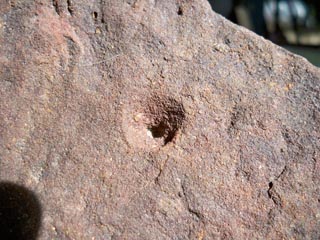 |
Monocraterion - close up. Found near the Airport. |
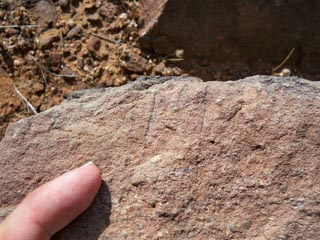 |
Skolithos Linearis - Side view of many small straight burrows
that go into the sediment vertically. The picture below reveals
the density throughout this rock. |
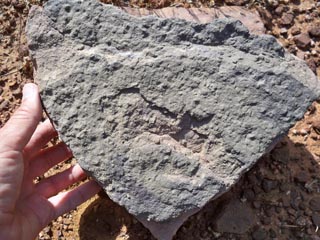 |
Skolithos Linearis - Top view. Same specimen as above. Every
bump on the surface is the entrance to a vertical burrow. The
density can be quite high in some areas. This was a worm with
tentacles that fed on particles in the water currents by filter
feeding. |
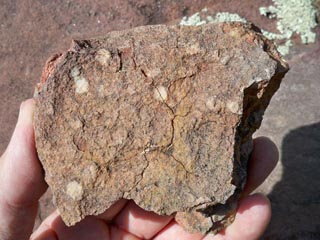 |
Skolithos Linearis -Larger animals. One of several species present
in the Payson area. |
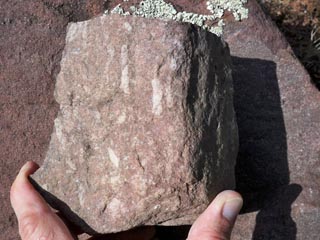 |
Skolithos Linearis - Side View same specimen. |
 Paleo HOME
Paleo HOME
|